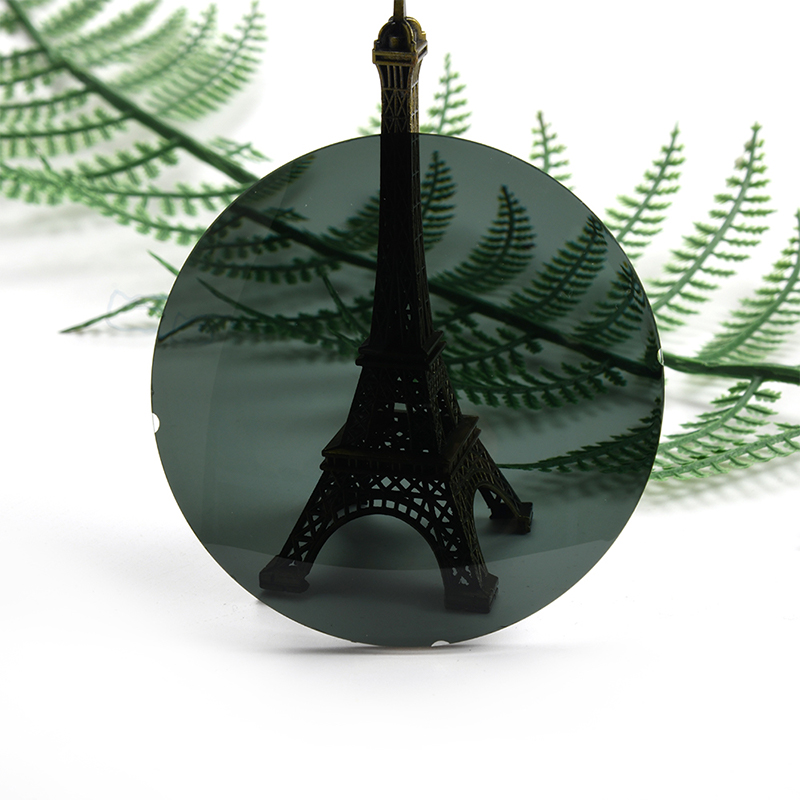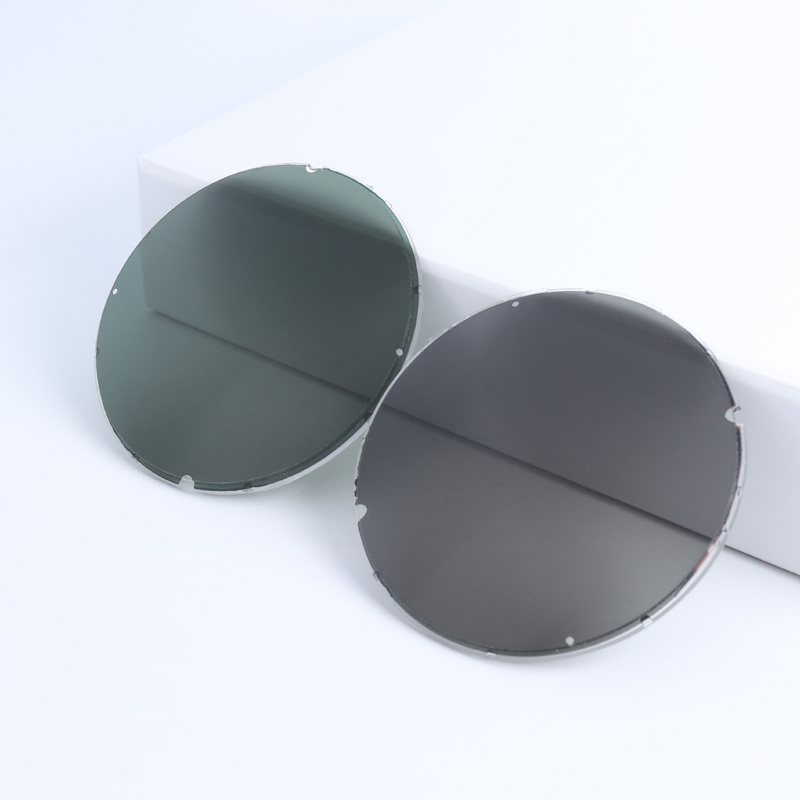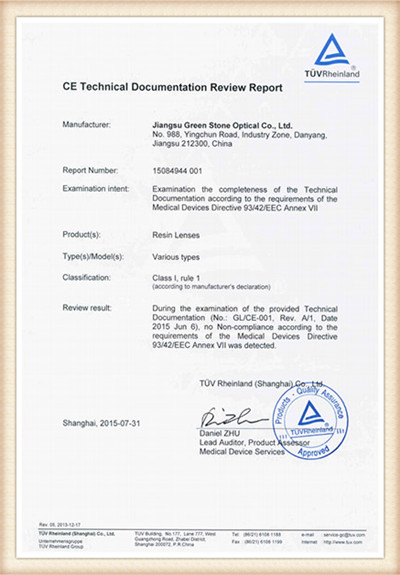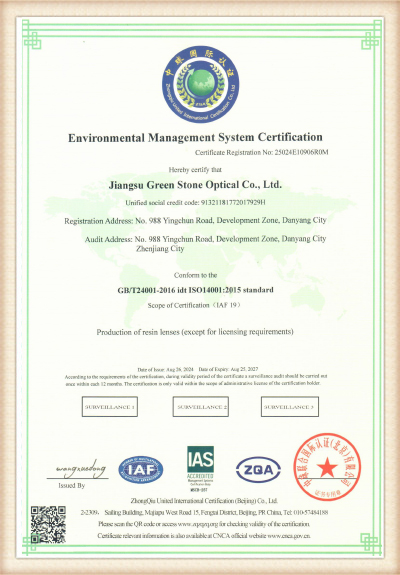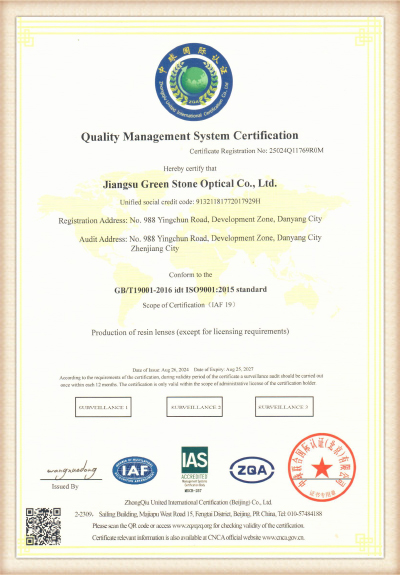Semi-Finished Lenses are the cornerstone of customized prescription (Rx) eyewear in the optical industry. For eyewear professionals, a deep understanding of the structure, function, and positioning of SFLs within the supply chain is essential for providing high-quality dispensing services. What are Semi-Finished Lense...
READ MORE
Product Series
Polarized Lens Manufacturers
Polarized Lens uses a highly efficient polarized filter layer to accurately filter out glare from reflections from water, road, glass, etc., significantly improving the clarity and contrast of vision, and effectively reducing visual fatigue caused by strong light interference. It is particularly suitable for long-term wear in strong light environments and is widely used in professional scenarios such as outdoor sports, driving safety, water operations, fishing observation, etc., helping the wearer to clearly identify target objects and details, and improve reaction speed and operation accuracy.
Polarized Lens has UV400 protection function, which fully blocks ultraviolet rays and protects the eyes from light aging and damage. High-strength composite materials bring excellent impact resistance, combined with scratch-resistant coatings to greatly improve durability and service life. It is suitable for the design and customization of multiple types of products such as sunglasses and functional goggles, and supports multiple specifications, multiple colors, and multiple curvatures to meet the dual requirements of optical quality and safety performance in various complex application scenarios.
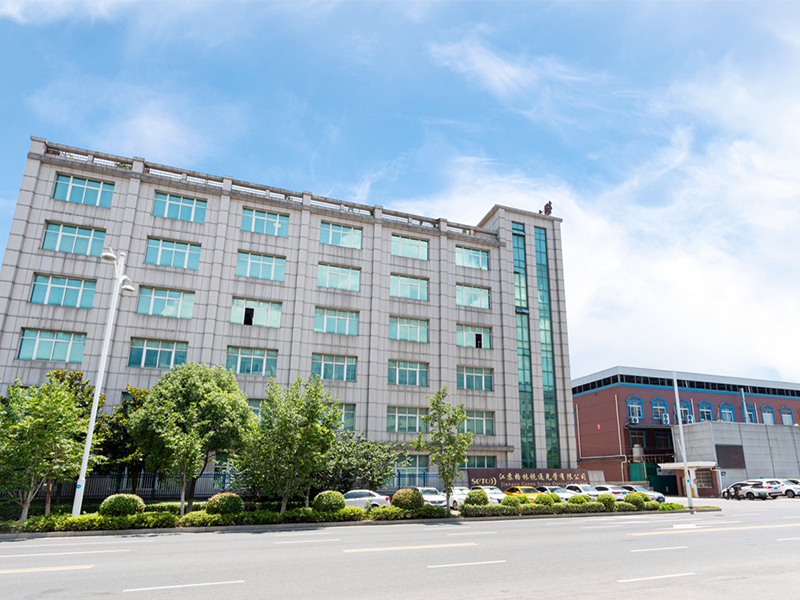
Our lens products involves almost all types of lenses. Product range covers 1.499, 1.56, 1.60, 1.67, 1.70 and 1.74 index, including single vision,bifocal, progressive, blue cut, Photochromic, blue cut photochromic, Infrared cut etc. with HC, HMC and SHMC treatment. Besides finished lens, We also manufactures semi-finished blanks. The products are registered with CE&FDA and our production certified by ISO9001& ISO14001 standards.
We positively introduce excellent management technology, comprehensively import Corporate Identity System and enhance the external image of company and brand.
-
-
Introduction to Core Concepts: The Purpose of Polarized and Photochromic Lenses Advanced lens technologies are designed to enhance visual comfort and protect the eyes from harmful light. Among the many high-quality options, Polarized Lenses and Photochromic Lenses are two of the most popular choices, yet they address d...
READ MORE -
Introducing Normal Lenses and Defocus Lenses In the fields of optics and image capture, the lens is a core component responsible for guiding and shaping light to form an image on a sensor or retina. While all lenses are based on the same laws of physics, their design goals and final effects can vary widely. This articl...
READ MORE
What Are the Differences in Optical Structure Between Polarized Lenses and Ordinary Lenses?
Ordinary lenses: In the modern optical lens market, polarized lens have gradually become indispensable high-performance lenses for driving, outdoor sports, and daily life due to their excellent glare suppression ability and visual comfort. Compared with ordinary lenses, polarized lenses have significant differences in optical structure and functional design. These differences not only determine their unique visual effects but also reflect the advantages of professional manufacturers like Jiangsu Green Stone Optical Co., Ltd. in product R&D and technological innovation.
Ordinary lenses mainly rely on refractive index and optical materials as the core, using a single transparent medium to evenly refract light to the retina to achieve clear visual imaging. The optical structure of ordinary lenses usually includes a substrate layer, hard coating (HC) layer, and multiple anti-reflective coatings (HMC) or super-hydrophobic multi-coating (SHMC). This structure can effectively improve lens durability and visual clarity, but it still has certain limitations when facing strong reflective light or glare from water surfaces, snow, or car windshields.
Polarized lenses: Polarized lenses, on the basis of ordinary lenses, introduce a polarizing layer (Polarizing Layer), which is the core difference in their optical structure. The polarizing layer is usually made of polyvinyl alcohol (PVA) film chemically processed and sandwiched in the lens substrate. Through the alignment of microscopic molecules, it forms an optical grid in a specific direction, allowing only light in a specific direction to pass through while absorbing or blocking light in other directions. This design allows polarized lenses to effectively filter horizontal reflected light, significantly reduce glare from water surfaces, snow, slippery roads, or car windshields, and improve visual contrast and clarity.
In terms of material selection, Jiangsu Green Stone Optical Co., Ltd. offers polarized lenses with refractive indices ranging from 1.499 to 1.74, including single vision, bifocal, and progressive lenses, and supports functional lenses such as blue light protection, photochromic, and infrared protection. High refractive index lenses not only reduce lens thickness and weight, improving wearing comfort, but also maintain excellent optical performance in coordination with the polarizing layer. This combination design ensures that polarized lenses can provide the best visual clarity and comfort in outdoor driving and sports scenarios.
In addition, the company strictly applies HC, HMC, and SHMC triple surface treatment processes in the production of polarized lenses. This not only enhances lens scratch resistance and anti-fouling ability but also maintains the stability and long-term performance of the polarizing layer. Whether in long-term outdoor driving or high-intensity sports, polarized lenses can effectively prevent lens scratches, oil stains, and glare effects, ensuring lasting and reliable visual experience.
From an optical principle perspective, ordinary lenses rely only on the lens refractive index and transmittance to adjust light, whereas polarized lenses selectively filter light based on direction, resulting in more realistic and comfortable vision. For example, during driving, ordinary lenses may cause sudden glare under strong sunlight, increasing fatigue and risk, while the optical structure of polarized lenses can quickly reduce horizontal reflected light, making the eyes more relaxed and visual information clearer.
In Jiangsu Green Stone Optical Co., Ltd. polarized lenses, the company precisely embeds the polarizing layer into lenses of various refractive indices through independent R&D and advanced production equipment, ensuring high compatibility with HC, HMC, SHMC, and other coatings. This not only demonstrates the company's profound strength in optical R&D and manufacturing technology but also makes its polarized lenses highly competitive in the global market. Whether for daily wear, sports-specific use, or high-end sunglasses applications, customers can find the most suitable polarized solutions within the company's extensive product line.
How Do Polarized Lenses Improve Visual Comfort in Outdoor Driving and Sports?
Visual comfort: In modern life, outdoor activities and driving safety are increasingly important. Strong sunlight reflections, road glare, and reflections from water or snow can directly affect visual comfort and reaction speed. In this context, polarized lenses (Polarized Lens), with their excellent glare suppression capabilities, have become indispensable optical equipment for outdoor driving and sports enthusiasts. As a professional optical lens manufacturer integrating R&D, production, and sales, Jiangsu Green Stone Optical Co., Ltd. is committed to improving users' visual experience through high-performance polarized lenses, providing reliable and professional optical solutions for global customers.
The core advantage of polarized lenses lies in their unique optical structure. Ordinary lenses achieve clear imaging only through light refraction, but when facing horizontal reflected light, strong glare is often produced, affecting visual clarity and reaction speed. Polarized lenses incorporate a polarizing layer, usually made of polyvinyl alcohol (PVA) film, in which molecules are aligned to form an optical grid in a specific direction. This layer effectively blocks horizontal reflected light and allows only vertically oriented light to pass through. This structural design significantly reduces eye fatigue and visual interference for drivers under direct sunlight, wet roads, or snowy conditions, thereby enhancing driving safety.
The advantages of polarized lenses are equally significant in outdoor sports. Whether skiing, fishing, sailing, or running, strong reflected light may cause blurred vision, misjudgment, or eye discomfort. Jiangsu Green Stone Optical Co., Ltd. polarized lenses can accurately filter glare while maintaining high light transmittance and color fidelity, providing a more realistic and clearer visual experience in outdoor activities. For example, in fishing, polarized lenses reduce water surface reflections, making underwater fish clearly visible; in skiing or mountaineering, polarized lenses reduce snow glare, improving terrain judgment and reducing accident risks.
To meet different user needs, Jiangsu Green Stone Optical Co., Ltd. offers polarized lenses in multiple refractive indices ranging from 1.499 to 1.74, including single vision, bifocal, and progressive lenses, and supports features such as blue light protection, photochromic, and infrared protection. High refractive index lenses not only reduce lens thickness and weight, improving wearing comfort, but also maintain excellent optical performance in coordination with the polarizing layer. This ensures the best visual clarity and comfort in outdoor driving and sports scenarios.
In addition, the company applies HC, HMC, and SHMC triple surface treatments on polarized lenses. This not only enhances scratch resistance and anti-fouling ability but also ensures the long-term stability and performance of the polarizing layer. Polarized lenses also enhance color contrast and depth perception, allowing drivers to clearly identify road signs, vehicle contours, and pedestrian movement on wet roads or under strong sunlight, significantly reducing traffic accident risks. Sports enthusiasts can more accurately judge movement paths, obstacles, and environmental changes, improving efficiency and safety.
As an industry-leading optical lens manufacturer, Jiangsu Green Stone Optical Co., Ltd. has a 65,000-square-meter production base and more than 350 professional employees, introducing a full set of advanced equipment and production technology to ensure that every polarized lens achieves international standards in optical precision, durability, and appearance. The company’s polarized lenses are widely used domestically and exported worldwide, registered with CE & FDA certifications, and the production system is certified under ISO9001 and ISO14001 standards, reflecting the company's comprehensive strength in polarized lens R&D, production, and quality control.
How Can the Polarization Effect and Polarization Angle Accuracy of Polarized Lenses Be Tested?
Polarization effect: Polarized lenses (Polarized Lens), due to their excellent glare suppression and visual comfort, are widely used in outdoor sports, driving, and various high-precision visual scenarios. However, the core performance of polarized lenses—the polarization effect and polarization angle accuracy—directly determines the visual effect and safety in practical use. Therefore, scientifically and accurately testing the polarization performance of lenses is a key step for optical lens manufacturers to ensure product quality. As a professional optical lens manufacturer integrating R&D, production, and sales, Jiangsu Green Stone Optical Co., Ltd. has established a complete testing system for polarized lenses, ensuring that every lens meets international standards and customer requirements.
The polarization effect of a polarized lens mainly refers to the lens's ability to filter horizontal reflected light, that is, the percentage of non-vertical light blocked by the lens. Common testing methods include using a polarimeter and measuring light transmittance. A polarimeter uses a light source with a known polarization direction to illuminate the lens, and by analyzing changes in transmitted light intensity, the polarization effect of the lens can be quantified. For example, when light passes through a polarized lens and the transmitted light intensity decreases significantly, it indicates that the polarizing layer is working correctly. Jiangsu Green Stone Optical Co., Ltd. uses high-precision polarimetric equipment to monitor the polarization rate of each lens in real time, ensuring that the polarization rate meets customer-specified standards, such as the common 99% polarization rate, effectively suppressing glare during driving or outdoor sports.
Polarization angle accuracy: The polarization angle accuracy is another core indicator of polarized lenses. It refers to the deviation between the installation direction of the polarizing layer in the lens and the designed polarization direction. Polarization angle accuracy directly affects the lens's ability to filter glare, and any deviation may cause blurred vision or incomplete glare elimination. Testing usually uses a polarization angle meter or an optical rotary stage with a polarized light source. By rotating the lens and recording the transmitted light variation curve, the actual polarization direction deviation from the theoretical angle is determined. The standard accuracy for polarization angle is generally required within ±2°, and high-end sports or driving lenses may require ±1° accuracy.
To achieve high-precision testing, Jiangsu Green Stone Optical Co., Ltd. introduces a full set of advanced optical testing equipment and combines it with independently developed software systems to conduct comprehensive testing on each batch of polarized lenses. The testing process typically includes the following steps: first, the lens undergoes a polarization transmittance measurement under a standard light source to ensure the polarization rate meets specifications; second, the lens is measured for polarization direction deviation using a rotation angle tester, recording the actual polarization angle of each lens; finally, the testing data is compared with the design parameters, and lenses that do not meet the standard are reworked or rejected, ensuring consistent polarization performance in the finished product.
In addition to polarization rate and angle accuracy, surface treatment and lens material can also affect polarization performance. For example, multi-layer coatings (HMC, SHMC) may change the light transmission path, and high refractive index lenses may have minor optical distortions when embedding the polarizing layer. Jiangsu Green Stone Optical Co., Ltd. ensures that the polarizing layer is perfectly combined with the lens substrate through precise injection of the polarizing film and strict process control, and the lenses are re-tested after coating to ensure optimal durability and optical performance.
In the global market, polarized lenses are used in scenarios requiring extremely high quality. Whether in outdoor driving, skiing, fishing, high-end sports, or industrial inspections, the polarization effect and polarization angle accuracy directly affect user experience and safety. Through strict testing procedures, Jiangsu Green Stone Optical Co., Ltd. ensures the stable performance of polarized lenses, demonstrating the company’s comprehensive strength in optical R&D, precision manufacturing, and quality management. The company produces polarized lenses with refractive indices 1.499, 1.56, 1.60, 1.67, 1.70, and 1.74, including single vision, bifocal, progressive, and functional lenses (blue light protection, photochromic, infrared protection), all with HC, HMC, and SHMC treatments, and certified with CE & FDA registrations and ISO9001 & ISO14001 quality system standards.
Does Polarization Performance Get Affected When Polarized Lenses Are Combined with Photochromic Lenses?
Polarized and photochromic combination: With the continuous development of optical lens technology, consumers' demand for lens functions has become increasingly diversified. Polarized lenses, with their excellent glare suppression, are widely used in outdoor driving, sports, and daily life, while photochromic lenses (Photochromic Lens) can automatically adjust lens color according to light intensity, enhancing visual comfort and eye protection. In recent years, the combination of polarized and photochromic lenses has become a popular trend in the high-end optical market. However, many customers are concerned whether polarization performance will be affected when these two functions are combined. Jiangsu Green Stone Optical Co., Ltd. provides professional answers based on years of optical R&D and manufacturing experience.
The core performance of polarized lenses lies in the polarizing layer (Polarizing Layer), usually made of polyvinyl alcohol (PVA) film, with molecules aligned in a specific direction to allow only vertical light to pass, effectively blocking horizontal reflected light and reducing glare from water, roads, and snow surfaces. The core function of photochromic lenses is that light-sensitive materials (such as silver salts or photochromic dyes) undergo chemical or physical reactions under ultraviolet radiation, changing the lens color and automatically adjusting light transmittance.
From an optical structure perspective, the polarizing layer and the photochromic layer are usually in different positions within the lens, but both directly affect light transmittance and optical performance. If the material ratio, thickness, and arrangement order of the polarizing and photochromic layers are not strictly controlled during production, polarization performance may be slightly affected. For example, an overly thick photochromic layer may increase light scattering, slightly altering light transmission direction and reducing polarization efficiency. During rapid color changes, light absorption by photochromic molecules at different wavelengths may temporarily interfere with color fidelity and polarization effects.
To address this challenge, Jiangsu Green Stone Optical Co., Ltd. adopts multiple precision processes and quality control measures in the production of polarized photochromic lenses. First, the company selects high-uniformity, high-transmittance polarizing film and precisely matches it with photochromic material to ensure that the polarizing layer remains stable during color change. Second, during lens casting and coating, the concentration and distribution of the photochromic material are optimized so that the polarization rate remains high under different light conditions. For example, under typical outdoor light conditions, the polarization rate of polarized photochromic lenses can reach 99%, ensuring users still obtain clear and comfortable vision during driving, fishing, skiing, or other outdoor activities.
In addition, the company applies HC (Hard Coating), HMC (Hard Multi Coating), and SHMC (Super Hydrophobic Multi Coating) treatments to polarized photochromic lenses. This not only enhances scratch resistance, anti-reflection, water, and oil resistance, but also ensures that the polarizing layer and photochromic layer do not delaminate, peel off, or degrade in optical performance over long-term use. Each lens undergoes multiple tests for polarization rate, polarization angle accuracy, and photochromic response speed before leaving the factory, ensuring highly stable product performance.
From the user experience perspective, polarized photochromic lenses offer significant advantages in outdoor driving and sports. Under strong sunlight, the lens automatically darkens, further enhancing polarization and reducing glare on the eyes. Indoors or on cloudy days, the lens quickly returns to a lighter color, maintaining clear vision while ensuring visual comfort and safety. This intelligent optical adjustment function is not available in ordinary polarized lenses and fully reflects Jiangsu Green Stone Optical Co., Ltd.’s technical advantages in optical R&D, material selection, and precision manufacturing.
Although combining polarized lenses with photochromic functionality has potential optical interference risks, through high-precision material matching, optimized optical design, precise coating processes, and strict testing control, polarization performance is not significantly affected. Jiangsu Green Stone Optical Co., Ltd. relies on a 65,000-square-meter production base, more than 350 professional employees, and advanced equipment to ensure that every polarized photochromic lens achieves international standards in polarization effect, photochromic response, and durability. Whether single vision, bifocal, progressive lenses, or functional lens combinations such as blue light or infrared protection, customers can obtain high-performance, reliable polarized photochromic solutions for optimal outdoor driving, sports, and daily wear visual experience.



 English
English Español
Español

